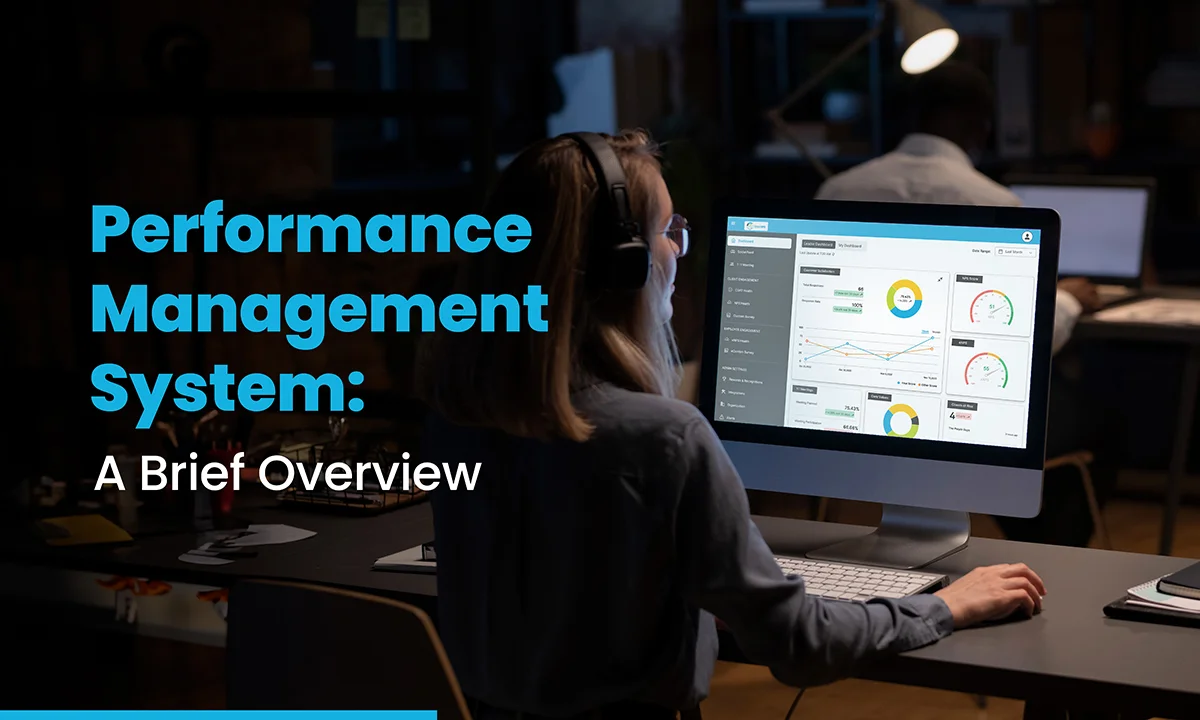Performance management System is the process of routinely assessing employees’ work in relation to the predetermined goals. While performance management may appear straightforward, this isn’t always the case. It can be time-consuming and challenging to implement a system that meets the demands of a managed services provider (MSP) business like yours. However, because cloud-based performance management software is now widely available and technology has become more commoditized, it is possible for your MSP to readily overcome these obstacles.
This blog post will provide you with a 360-degree overview of the performance management system, explain its key elements and advantages, and show you how Team GPS can help you effectively monitor your employees’ performance.
What is a performance management system?
The procedure and approach used to evaluate employee performance is known as the performance management system. It’s a methodical technique of coordinating your employees’ individual objectives with your MSP. The goals and targets of your MSP can only be achieved when your employees are working in a direction that can bring fruitful results. Therefore, your employees need clarity about their responsibilities and ways to perform to gain maximum benefit.
It becomes essential for you to establish a goal, assign it to your team member and then assess its accomplishment and the outcome. Strategic planning for this process will highlight the gaps and produce a more efficient procedure.
How a performance management system works for your MSP
A performance management system is a crucial component for ensuring the success and growth of your MSP. Here’s how it works:
1. Goal Setting
The performance management system begins with setting clear and measurable goals for your MSP team. These goals should align with the overall objectives of your organization and provide a roadmap for individual and team performance.
2. Regular Feedback
Feedback is essential for guiding employee performance and development. It facilitates regular feedback sessions between managers and employees, allowing for constructive discussions on strengths, areas for improvement and goal progress.
3. Performance Evaluation
Regular performance evaluations are conducted to assess employee performance against established goals and expectations. These evaluations provide valuable insights into individual strengths, weaknesses, and areas for growth, helping to inform future development plans.
4. Recognition and Rewards
Recognition and rewards play a vital role in motivating employees and reinforcing desired behaviors. A performance management tool includes mechanisms for acknowledging and rewarding exceptional performance, fostering a culture of appreciation and achievement within the MSP team.
5. Development Planning
Based on performance evaluations and feedback, development plans are created to support employee growth and skill enhancement. These plans may include training opportunities, mentorship programs, or special projects aimed at developing key competencies and advancing career goals of your team.
6. Performance Monitoring
Continuous monitoring of employee performance ensures that progress is tracked effectively, and adjustments can be made as needed. Performance management systems provide tools and metrics for monitoring performance metrics in real-time, allowing for proactive intervention and support when necessary.
Who uses Performance Management Systems?
Performance management software is an essential part of your MSP that employs individuals to undertake their work. Following is some of the common users of this system:
- Employees
As it impacts your employees directly, they are the foremost user of a performance management tool. Your teammates can discuss their annual goals with you to define their objectives. They can also participate in reviewing their peers as a part of the 360-degree feedback process.
- HR Personnel
The HR department is concerned with the annual appraisals of your employees. Hence, they need the support of performance management software to evaluate the performance of other employees and provide fair appraisals based on it.
- Management
The management has the final say in providing the employee with appraisals. Hence, you need to access the performance management system to understand whether your employee has managed to achieve their goals on time.
Key elements of a performance management system
The software for performance management can be set up in a hybrid environment, in the cloud, or on-site. A performance management solution provides benefits like expanded data storage and improved security. It also integrates seamlessly with training, compensation, and other HR systems.
The three essential procedures support a performance management tool:
1- Make a plan and implement goal management
- Match teams’ performance to the organization’s goals.
- To boost employee engagement, provide meaningful and gratifying tasks.
- Adjust goals quickly as company priorities change.
2- Keep an eye on things with ongoing performance management
- Keep an eye on each employee’s ambitions to ensure they continue to line up with the company’s objectives.
- Offer direction and criticism to enhance performance.
- Acknowledge successful outcomes as they occur.
3- Assess and identify using performance evaluations
- Accurately and consistently evaluate performance.
- Acknowledge and honor exceptional achievement.
- Measure the value your personnel add to the company using data-driven insights from the system.
You may also like: How Employee Recognition Programs Can Help Your MSP Grow?
Benefits of a Performance Management Software
An efficient performance management strategy tool can yield various benefits, tailored to the needs of your MSPs:
Standardized Evaluation: By systematically evaluating employee performance using standardized metrics, your MSP can ensure consistency and transparency across the organization.
Identifying Top Performers: A well-designed performance management strategy tool allows your MSP to identify top performers and address their training needs effectively, fostering continuous improvement and development.
Boosting Motivation: Recognizing and appreciating your employees for their contributions fosters a sense of belonging and increases motivation and job satisfaction within your team.
Reducing Turnover: Higher employee satisfaction levels lead to reduced turnover rates, as your employees are more likely to stay with your MSP for the long term.
Automated Efficiency: With software use, the performance management process becomes automated, time-saving and effortless for you. Continuous feedback and mid-course corrections contribute to enhanced efficiency and productivity within your MSP work culture.
Overall, a robust performance management system tailored to the unique needs of your MSP can drive employee engagement, satisfaction, and organizational success.
How Team GPS helps you manage performance efficiently
Team GPS streamlines performance management for your MSP with intuitive features such as:
- AI-assisted employee reviews for comprehensive insights
- Data-driven assessments to make informed decisions
- Actionable insights through comprehensive performance reports
- Progress tracking to drive accountability and many more.
Talk to us today to learn how Team GPS can streamline performance management and drive productivity in your MSP.








